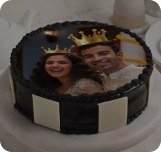About Republic Day
About Republic Day
Republic Day is a national holiday in India and a proud day for Indians. It is the day on which the Constitution of India came into effect on January 26, 1950. On this day, the Government of India Act (1935) was replaced as the governing document of India and turned the whole nation into a newly formed republic. The Indian Constituent Assembly adopted the Constitution on November 26, 1949, and the Constitution came into effect on January 26, 1950, with a democratic government system. Thereafter, India completed the transition towards becoming an independent republic. The January 26 date was chosen as Republic Day because it was the day in 1929 when the Declaration of Indian Independence was proclaimed by the Indian National Congress.
History Of Republic Day Celebration
After the various independence movements, India finally achieved independence from British Rule on August 15, 1947. The independence came through the Indian Independence Act 1947. It is an Act of the Parliament of the United Kingdom that partitioned British India into the two new independent Dominions of the British Commonwealth which later became Commonwealth of Nations. India obtained its independence on August 15, 1947, as a constitutional monarchy with George VI as head of state and Earl Mountbatten as governor-general. That time, the country did not yet have a permanent constitution. Instead, its laws were based on the modified colonial Government of India Act 1935.
On August 29, 1947, a resolution was moved for the appointment of the Drafting Committee with Dr. B R Ambedkar as chairman. Then, the Committee was appointed to draft a permanent constitution for the country. Thus, a draft constitution was prepared by the committee and submitted to the Constituent Assembly on November 04, 1947.
The Assembly met in sessions for 166 days which was held over a period of two years, 11 months, and 18 days before adopting the Constitution. Moreover, all the sessions were open to the public. After many deliberations and some modifications, the 308 members of the Assembly signed two hand-written copies of the document (one in Hindi and another in English) on January 24, 1950. Two days later which was on January 26, 1950, it came into effect throughout the whole nation.
On the same day, Dr. Rajendra Prasad was chosen to be the first President of India and began his first term of office as President of the Indian Union. The Constituent Assembly became the Parliament of India under the transitional provisions of the new Constitution. Thus, Independence Day celebrates the freedom of India from British Rule while Republic Day celebrates the coming into force of its constitution.
Republic Day Celebrations In India
The main celebration of Republic Day in India is held in the national capital, New Delhi, at the Rajpath before the President of India. On this day, ceremonious parades take place at the Rajpath, which are performed as a tribute to India, its unity in diversity, and its rich cultural heritage. The Republic Day parade is organized by the Ministry of Defence. The parade commences from the gates of the Rashtrapati Bhavan, Raisina Hill on Rajpath past the India Gate.
The Republic Day parade is the main attraction of India's Republic Day Celebrations and lasts for three days. Moreover, the Republic Day parade showcases India's Defence Capability, Cultural and Social Heritage. Nine to twelve different regiments of the Indian Army along with the Navy and the Air Force with their bands march past in all their finery and official decorations. The President of India who is the Commander-in-Chief of the Indian Armed Forces takes the salute. Furthermore, twelve contingents of various paramilitary forces of India and police forces also take part in this Republic Day parade.
Every year, the President of India distributes Padma Awards to the civilians of India on the eve of Republic Day. These Padma Awards are the second highest civilian awards in India after Bharat Ratna. These awards are given in three categories, namely
- Padma Vibhushan, for exceptional and distinguished service
- Padma Bhushan, for distinguished service of a high order
- Padma Shri, for distinguished service
Why Do We Celebrate Republic Day?
People of India celebrate Republic Day every year. It is the proud day when India became an independent as well as democratic republic country. On the day of Republic Day, we can see Indians waving the National Tricolor Flag and hosting various events to celebrate this day. Moreover, many government institutions as well as schools and colleges host various events to honor this day. The celebrations of Republic Day include waving the Indian flag, playing as well as singing the National Anthem, playing and dancing on various patriotic songs, and role plays. Furthermore, we can also see Indian people regardless of their religion and status come together to celebrate this special day. So, Republic Day is a pride for Indians and we have to celebrate it not just for ourselves but for those freedom fighters who sacrificed their lives for the freedom of our nation.

















